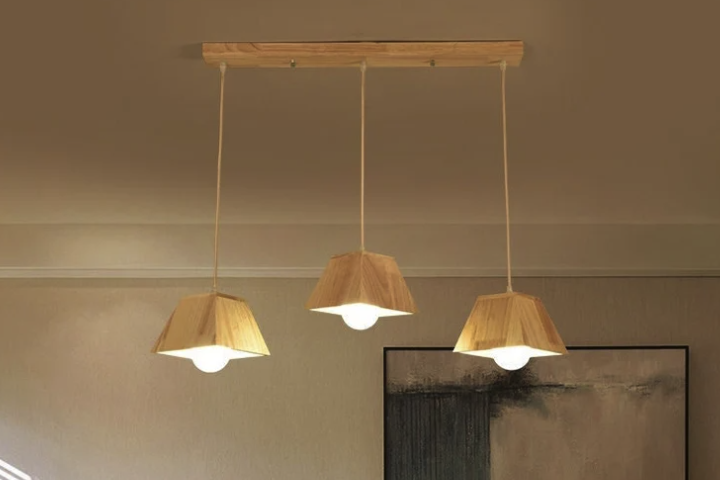The evolution of Japanese-inspired chandeliers is deeply intertwined with the broader narrative of Japanese art and design, which has been influenced by centuries of cultural exchange and aesthetic philosophy. The roots of this style can be traced back to traditional Japanese craftsmanship, where artisans meticulously created objects that harmonized with nature and emphasized simplicity. The aesthetic principles of wabi-sabi, which celebrate imperfection and transience, have played a significant role in shaping the design ethos of Japanese lighting fixtures.
This philosophy encourages a connection to the natural world, often reflected in the materials and forms used in chandeliers. During the Meiji period (1868-1912), Japan began to open its doors to Western influences, leading to a fascinating blend of Eastern and Western design elements. This era saw the introduction of electric lighting, which transformed the way spaces were illuminated.
Artisans began to experiment with new materials such as glass and metal, while still adhering to traditional Japanese aesthetics. The result was a unique fusion that gave rise to chandeliers that not only served a functional purpose but also acted as artistic statements. Over time, these designs evolved, incorporating modern techniques while retaining the essence of Japanese artistry, leading to the contemporary Japanese-inspired chandeliers we see today.
How Japanese-Inspired Chandeliers Can Enhance Your Kitchen
Creating a Warm and Inviting Atmosphere
The soft, diffused light emitted by these fixtures creates a warm atmosphere that encourages social interaction and culinary creativity. Unlike harsh overhead lighting, which can be uninviting, the gentle illumination provided by these chandeliers fosters a sense of calm and tranquility, making it an ideal setting for family gatherings or intimate dinners.
Embracing Biophilic Design
Moreover, the design of Japanese-inspired chandeliers often incorporates natural materials such as wood, rice paper, and bamboo, which resonate with the principles of biophilic design. This approach emphasizes the connection between humans and nature, promoting well-being and comfort. For instance, a chandelier crafted from bamboo can introduce an organic element into your kitchen, enhancing its aesthetic appeal while also contributing to a healthier indoor environment.
Adding Depth and Character to Your Kitchen
The interplay of light and shadow created by these fixtures can also highlight architectural features or decorative elements in your kitchen, adding depth and character to the space.
Choosing the Right Japanese-Inspired Chandelier for Your Kitchen
Selecting the perfect Japanese-inspired chandelier for your kitchen involves considering several factors that align with both your personal style and the overall design of the space. First and foremost, it is essential to assess the size of your kitchen and the scale of the chandelier. A large, statement piece can serve as a focal point in an expansive kitchen, while smaller fixtures may be more appropriate for compact spaces.
Additionally, the height at which the chandelier Nownets will be hung is crucial; it should provide adequate illumination without obstructing sightlines or creating an overwhelming presence. Another important consideration is the color palette and materials used in your kitchen. Japanese-inspired chandeliers often feature earthy tones and natural finishes that complement a variety of design styles.
For instance, if your kitchen boasts a minimalist aesthetic with clean lines and neutral colors, a simple pendant light made from rice paper or wood can enhance this look without overpowering it. Conversely, if your kitchen incorporates vibrant colors or eclectic decor, you might opt for a more intricate chandelier that showcases traditional Japanese motifs or patterns. Ultimately, the right choice will harmonize with your existing decor while adding a touch of elegance and sophistication.
Incorporating Japanese Design Elements into Your Kitchen
To create a cohesive look that reflects Japanese design principles in your kitchen, consider integrating various elements that echo the simplicity and beauty found in traditional Japanese aesthetics. One effective way to achieve this is through the use of natural materials. Incorporating wooden cabinetry or bamboo accents can create a seamless connection between your chandelier and other design features in the space.
Additionally, using stone countertops or ceramic tiles can evoke a sense of groundedness that aligns with the organic feel of Japanese design. Color plays a pivotal role in establishing a serene atmosphere reminiscent of Japanese interiors. Soft hues such as muted greens, browns, and whites can create a calming backdrop for your kitchen.
You might also consider incorporating elements like shoji screens or sliding doors that allow for flexibility in space usage while maintaining an open feel. These features not only enhance functionality but also reflect traditional Japanese architecture’s emphasis on fluidity and harmony with nature. By thoughtfully combining these elements with your chosen chandelier, you can create a kitchen that embodies tranquility and elegance.
Maintenance and Care for Japanese-Inspired Chandeliers
Maintaining Japanese-inspired chandeliers requires attention to detail to preserve their beauty and functionality over time. Regular cleaning is essential to prevent dust accumulation and ensure optimal light diffusion. For chandeliers made from delicate materials such as rice paper or fabric, it is advisable to use a soft cloth or duster to gently wipe away dust without damaging the surface.
In contrast, metal or glass components may require more thorough cleaning with appropriate solutions that do not scratch or tarnish the finish. In addition to routine cleaning, periodic inspections are crucial for ensuring the safety and longevity of your chandelier. Check for any loose connections or signs of wear in electrical components, as these issues can pose safety hazards.
If you notice any damage or malfunctioning parts, it is best to consult a professional electrician who specializes in lighting fixtures. By taking these proactive steps in maintenance and care, you can enjoy the beauty of your Japanese-inspired chandelier for years to come.
Where to Find Japanese-Inspired Chandeliers for Your Kitchen
Exploring Specialty Stores and Local Boutiques
One option is to explore specialty lighting stores that focus on Asian-inspired decor; these establishments often carry a curated selection of chandeliers that embody traditional Japanese aesthetics while incorporating modern sensibilities. Visiting local boutiques can also provide opportunities to discover handcrafted pieces that reflect regional artisanship.
Online Marketplaces and Artisans
Online marketplaces have become increasingly popular for sourcing unique lighting fixtures from around the world. Websites like Etsy feature numerous artisans who create custom chandeliers inspired by Japanese design principles. Additionally, larger retailers such as Wayfair or Overstock may offer a range of options at different price points, allowing you to compare styles and find one that fits your budget.
Importing Authentic Japanese Designs
For those seeking authenticity, consider reaching out to importers who specialize in Japanese home decor; they often have access to exclusive pieces that are not readily available in mainstream markets. By exploring these diverse avenues, you can find a chandelier that perfectly complements your kitchen while celebrating the rich heritage of Japanese design.

